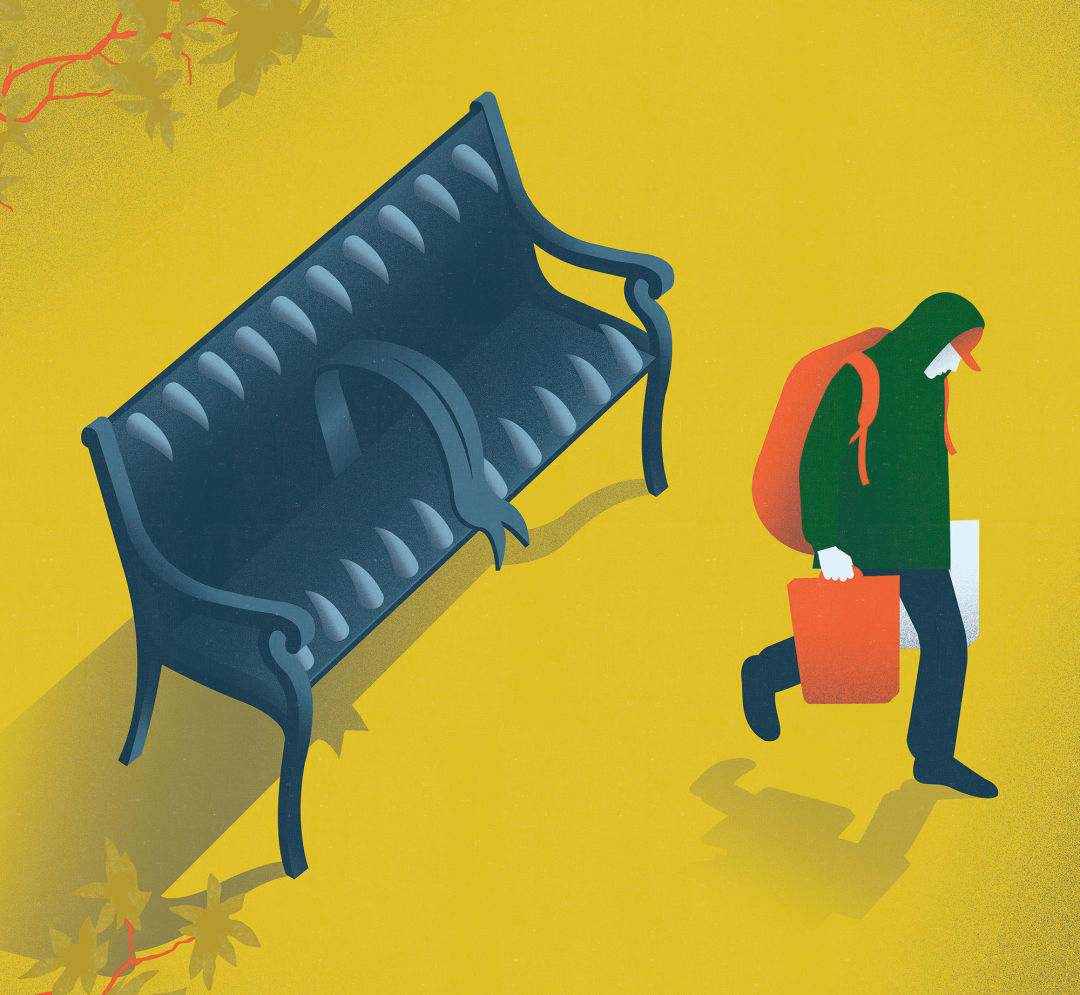Public Parks and Onramps Are Biting Back Against Camping. But Should They?

Image: Neil Webb
Suddenly, they were everywhere: beside I-405 on-ramps, near the Days Inn on NE 82nd, by Highway 26. Tarmac-bordering islands, once occupied by homeless Portlanders, now bristled with boulders from the Oregon Department of Transportation.
The boulders are new; “hostile design,” the urban design concept behind them, isn’t. ODOT’s rocks are just one way that public agencies and private businesses enlist landscape designers to make otherwise public spaces—from on-ramps to parks—unwelcoming to certain groups: skateboarders, loiterers, but most commonly, the homeless. Worldwide, hostile design (also called exclusionary, defensive, or inhospitable design) manifests as spike-studded sidewalks or benches awkwardly divided by armrests. In Portland, look to the mysterious concrete planters that appeared last fall under the Morrison Bridge along SW First—claiming a sunless sidewalk that previously sheltered a few of the 15,000 people experiencing homelessness in our state. The message? This public space isn’t for you.
Camper-deterring strategies aren’t new here; ODOT has also used thorny bushes and fences. But “rockscaping,” as ODOT spokesperson Don Hamilton refers to the boulders, ratchets up the practice in intensity and investment; the agency has spent more than $840,000 on boulder projects in 2019 alone. It’s a move that also escalates an ongoing local debate over what we really mean by “public space.”
“So often the word ‘public’ doesn’t include everyone,” says Kaia Sand, executive director of homeless advocacy group Street Roots. “It’s important... to acknowledge that often the word [is reserved for] middle-class folks, people who are shopping, people who are using a space in a particular way.”
According to Hamilton, the boulders are there for safety. “These areas are extremely unsafe for people,” he says, citing the 2010 death of a camper killed by a driver veering off I-405. “We are responsible under the law for [making] sure that these illegal campers are not putting themselves in jeopardy.”
Regardless of motive, advocates like Sand argue that discouraging camping in these otherwise unoccupied spaces creates a new problem: displacement. Hamilton says ODOT works with “local social agencies” to help move people on. But according to Sand, the calculus behind hostile design is incomplete and unjust. If safety is the priority, she asks, where can Portland’s homeless residents sleep safely? “We’re just creating impossible situations that also create a kind of toxic stress for people who are poor,” she says.
As hostile design goes global, homeless advocates are pushing back, and questioning the values of cities that embrace the strategy. Hostile design shows up in London’s now-famous Camden bench (the angular design of which impedes lying down), in studded steps in Marseilles, and in curved iron bars placed over a Toronto street vent. (The bars were removed after public outcry.) Investing in boulders and spikes, Sand points out, does nothing to actually fix our homelessness crisis. But maybe, advocates say, these potent symbols could help kick-start a reckoning about safety and space.
“Until we can bring everyone into housing or shelter of some kind, we need to designate outdoor areas that are specifically allowed for camping,” says Tony Bernal, senior public policy director at Portland homeless resource center Transition Projects. “If you’re concerned about people sleeping on the benches where people might want to sit, how about adding more benches?”




